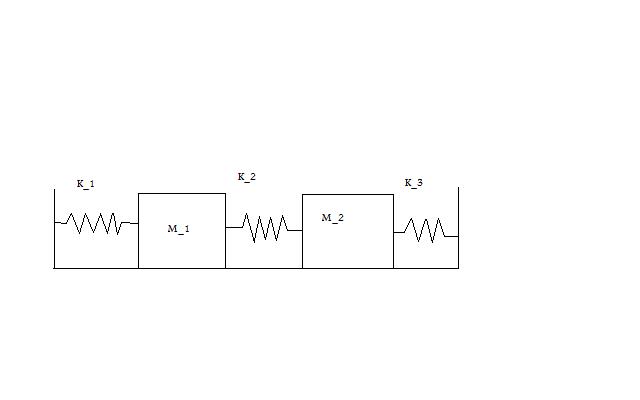|
|
| Line 98: |
Line 98: |
| \begin{bmatrix} | | \begin{bmatrix} |
| 0&1&0&0 \\ | | 0&1&0&0 \\ |
| \frac{(-50 N/m)}{15 kg}&0&\frac{-100 N/m}{15 kg}&0 \\ | | \frac{(-50 N/m)}{10 kg}&0&\frac{-25 N/m}{10 kg}&0 \\ |
| 0&0&0&1 \\ | | 0&0&0&1 \\ |
| \frac{100 N/m}{15 kg}&0&\frac{(250 N/m)}{15 kg}&0 | | \frac{25 N/m}{10 kg}&0&\frac{(100 N/m)}{10 kg}&0 |
| \end{bmatrix} | | \end{bmatrix} |
|
| |
|
Revision as of 13:48, 10 December 2009
Problem Statement
Write up on the Wiki a solution of a coupled oscillator problem like the coupled pendulum. Use State Space methods. Describe the eigenmodes of the system.

Initial Conditions:
Equations for M_1
Equations for M_2
Additional Equations
State Equations
=
With the numbers...
=
